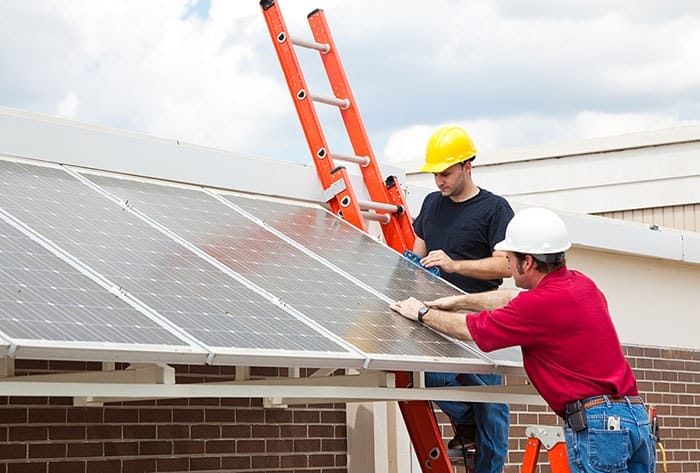
Introduction
Solar power is a sustainable and efficient alternative for meeting the energy needs of municipal and public buildings. This article explores the concept of solar power for these buildings and highlights its relevance and importance in today’s world.
Historical Background
Solar power technology has come a long way since the 19th century. From early solar thermal systems to the advent of photovoltaic (PV) panels, significant advancements have been made. Understanding the historical context helps in comprehending the adoption of solar power in municipal and public buildings.
Key Concepts and Definitions
To fully comprehend solar power for municipal and public buildings, it is important to define key terms such as solar power, PV panels, and net metering. Explaining the concept of solar energy generation and its conversion into electricity provides a comprehensive understanding of the topic.
Benefits of Solar Power for Municipal and Public Buildings
Environmental Benefits: Solar power offers numerous environmental advantages, including reduced carbon emissions and decreased reliance on fossil fuels. By utilizing solar energy, these buildings can contribute to mitigating climate change and promoting a cleaner and greener future.
Financial Benefits: Implementing solar power systems in municipal and public buildings can yield substantial cost savings and long-term financial benefits. By reducing energy bills and generating revenue through excess energy production, these buildings can allocate saved funds to other essential areas.
Positive Impact on the Community: Solar power adoption in municipal and public buildings can have a profound positive impact on the local community. By leading by example, these buildings can inspire others to embrace renewable energy and contribute to a more sustainable society.
Implementation and Integration Challenges
Implementing solar power systems in municipal and public buildings comes with its own set of challenges. Considerations such as infrastructure requirements and site selection play a crucial role. Additionally, integration issues with existing electrical systems and adherence to building codes and regulations must be addressed. Financial barriers can also hinder implementation, but innovative financing models and incentives can provide viable solutions.
Successful Case Studies
Real-world examples of successful solar power implementation in municipal and public buildings serve as inspiration and lessons for others. By showcasing the outcomes and benefits achieved by these entities, this section highlights the transformative potential of solar power. Additionally, innovative approaches and best practices in these case studies can guide future endeavors.
Emerging Technologies and Innovations
The field of solar power is constantly evolving, especially in the context of municipal and public buildings. Recent advancements cater specifically to the unique needs of these structures. Energy storage, smart grid integration, and energy management systems are among the emerging trends that enhance the efficiency and effectiveness of solar power. Furthermore, exploring the potential of integrating solar power with other renewable energy sources can pave the way for a more comprehensive and sustainable energy solution.
Current Trends or Developments
The adoption of solar power in municipal and public buildings is experiencing a surge in recent years. This section discusses the latest trends in this field and highlights notable research findings and reports. Government policies and incentives play a crucial role in promoting solar power adoption, and their impact is explored in depth.
Challenges or Controversies
While solar power for municipal and public buildings offers numerous advantages, there are challenges and controversies that need to be addressed. Concerns such as the initial installation cost and the potential visual impact of solar panels are discussed, alongside counterarguments and potential solutions.
Future Outlook
Looking ahead, the future implications and potential growth of solar power in municipal and public buildings are promising. Technological advancements, policy changes, and innovative financing models contribute to an optimistic outlook. Scaling up solar power adoption in these buildings holds immense potential for a cleaner and more sustainable future.
Conclusion
Solar power presents a compelling solution for meeting the energy needs of municipal and public buildings. By summarizing the main points discussed throughout the article, the significance and potential benefits of adopting solar power in these buildings are reiterated.